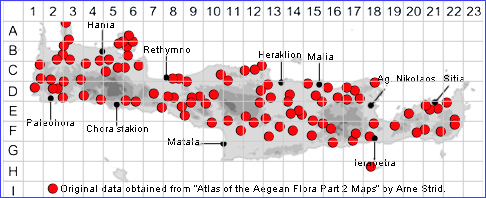SPECIES DESCRIPTION
HYPERICUM EMPETRIFOLIUM subsp. EMPETRIFOLIUM
Family and Genus:- See- GUTTIFERAE/Sect. CORIDIUM
Common Names:- None
Homotypic Synonyms:- None
Meaning:- Hypericum (Gr) Above-pictures. A name used by the Greek physician
and botanist Dioscorides for its use over shrines to repel evil spirits.
Empetrifolium (L) With Empetrum-like leaves. Empetrum = on rocks.
General description:- Erect to prostrate, much-branched shrublet.
Stems:-
1) Up to 50 cm, erect and caespitose with strict branching, or procumbent,
straggling and rooting.
Leaves:-
1) In whorls of 3, 4-12 x 0.5-2 mm, ericoid with revolute margins and translucent
glandular dots, fresh green, glabrous.
Flowers:-
1) In elongated panicles or simple cymes, or solitary.
2) Sepals, c. 2 mm, elliptic-oblong, obtuse, with subsessile black glands on the
margins.
3) Petals, 5-10 mm, bright yellow without reddish tinge and without black glands,
deciduous.
Fruit:-
1) Capsule, ovoid, with oblique, swollen lateral vittae.
Key features:-
1) Red or black glands present, at least on the leaves, sepals or anthers.
2) Leaves, in whorls of 3.
3) Petals, and stamens deciduous.
Habitat:- Crevices and ledges of limestone cliffs, rocky road embankments with
open dry shrubby vegetation, outcrops in open coniferous woodland. 0-800 m.
Distribution:- Albania, southern mainland Greece, the Aegean, western Turkey,
Cyprus and north-eastern Libya. On Crete widespread but more common in the
west.
Flowering time:- Mid-Mar to early June.
Photos by:- Fotis Samaritakis

